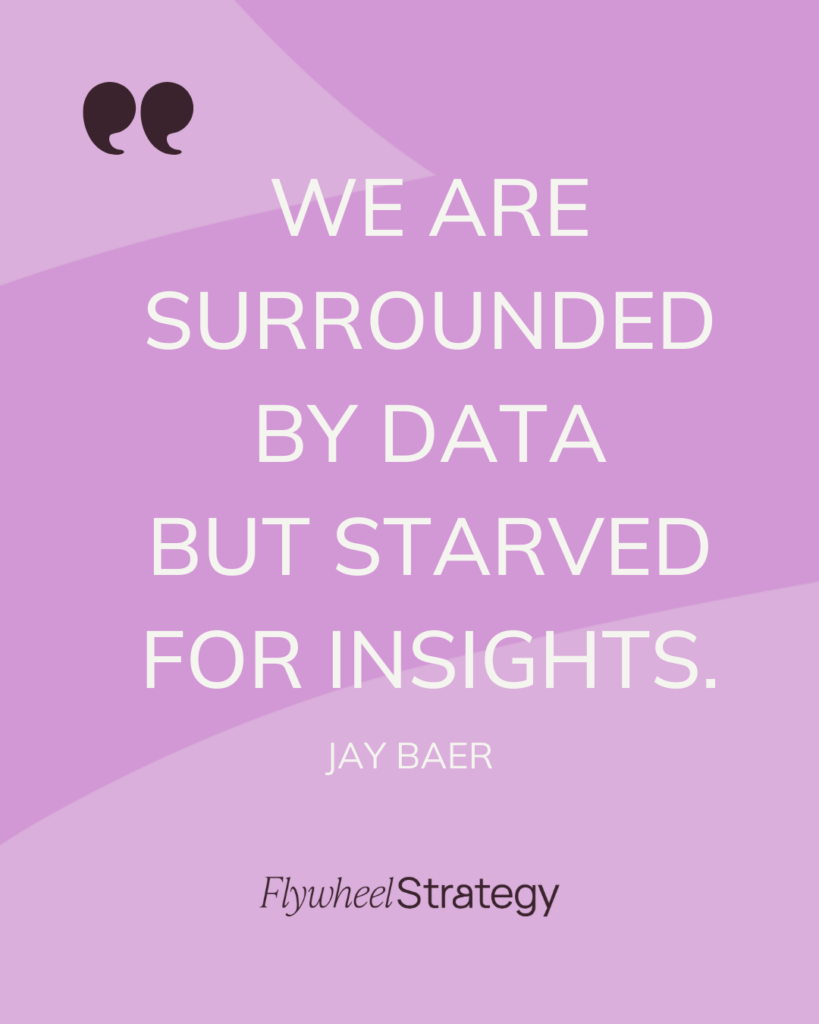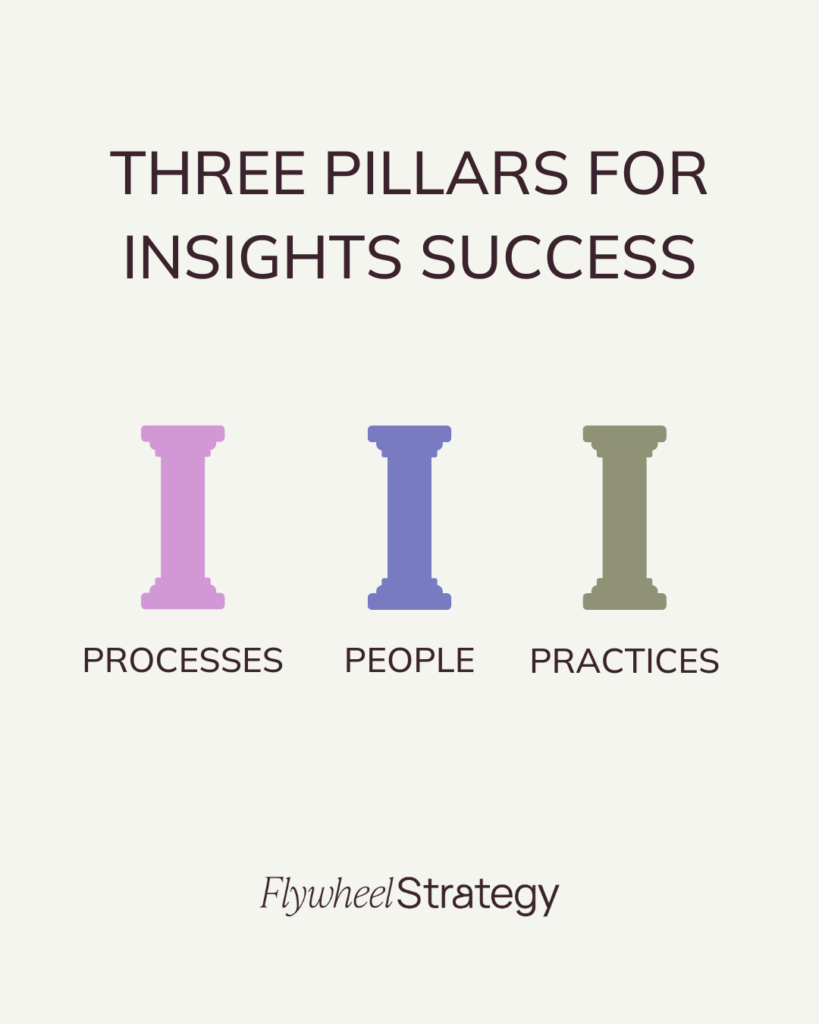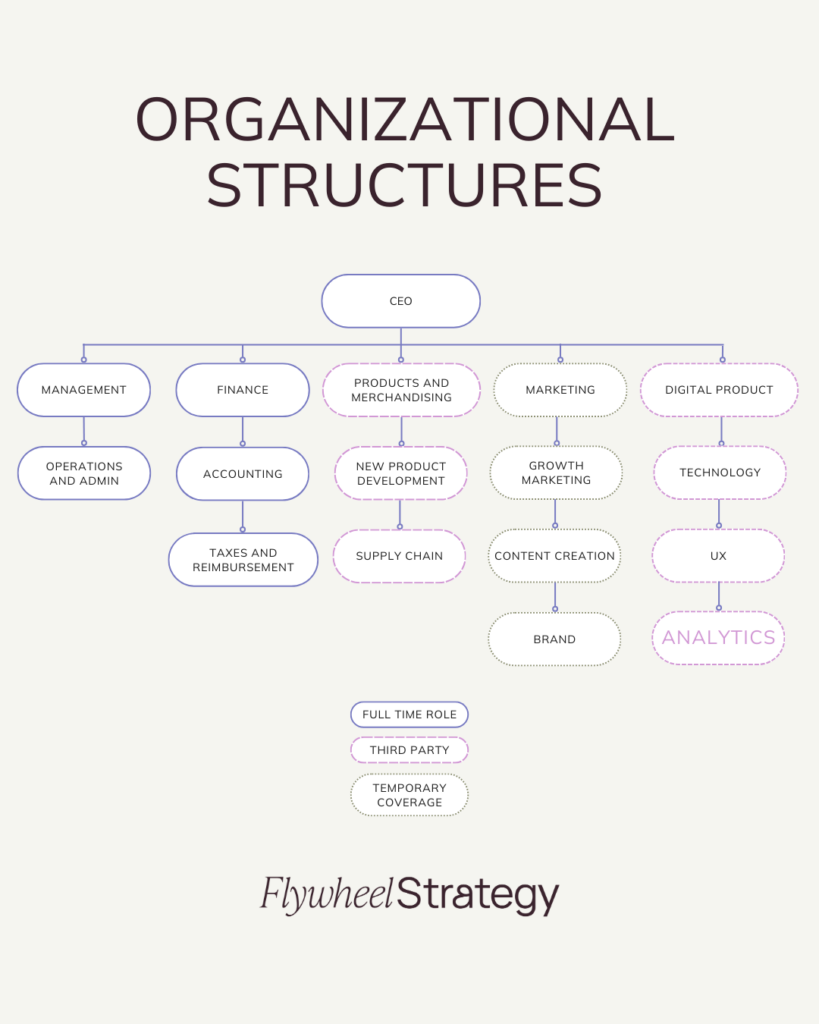WRITTEN BY: KATE MACCABE
In March, I partnered up with the Limited Supply community and Salima Nadira who leads product marketing at Airboxr, to unpack the three pillars of creating an organization that unlocks data insights. The right mixture of people, processes and practices is the difference between starving for insights versus feasting on insights. As Jay Baer so concisely and accurately shared, “We are surrounded by data but starved for insights.”

While all three pillars are important, this article is all about the people. Without clarity and confidence in who enables data for your business, the processes and practices do not have an environment to succeed. The promising news is whether your company is 1 person or 10,000 people – defining your approach to people enablement for insights pays dividends for any size of business.
We recommend leaders evaluate their organizational structure twice a year. To start, first review the current functions of your business and who is supporting the responsibilities in each area. Regardless of your team size, the need for management, finance, merchandising, marketing and digital products do not vanish simply because you don’t have a full time employee dedicating their focus to a particular area of expertise. For a company of 1 person, the challenge (and success) lies in managing time so each area of the business receives attention. For midsize to enterprise businesses, the challenge (and success) lies in ensuring the responsibility of data driven decision-making isn’t guarded by a singular team. Open the floodgates of accountability for quantitative and qualitative insights so every box on your org chart contributes to data-centric decisions.

Bi-annually, complete the exercise of mapping out not only what your team structure looks like, but who is supporting each function. Add a visual component to clarify which responsibilities make sense to assign to each of these three resourcing options:
- Full time employee: this resourcing option aligns well when the function requires consistent, ongoing support and the business need is permanent for the business to be successful,
- Third party: this resourcing option aligns well when the need for the function is emerging, exploratory and requires specialized skills to introduce the capability to the business. Agencies, freelancers, and contractors allow for flexibility and adaptability to your resourcing needs to provide fractional support before full time demand for the role exists.
- Temporary coverage: this resourcing option aligns well when team members are on vacation, medical and family leave or the area of focus for the business is general in nature.
Often the needs of your business can first be resourced with temporary coverage through clear, proactive communication to existing team members so they are empowered to successfully own the area of expertise. As the business grows, the area often expands beyond the distributed approach of temporary coverage moving into third party support. As the business matures and grows, both the workload and the cost of full time support through hiring an employee dedicated to the area become a long term, viable option.

Every six months, look at where your company needs and resourcing are to create a people plan that focus your resourcing strategy to pace with the growth of your business. As the organizational resourcing plan develops, pay special attention to where your analytics efforts lives. The center of excellence for analytics often lives within the Digital Product team. As the organization sees data insights as their own “internal product” to leverage and enable the business, the analytics team can establish documentation, standards and dashboards that place data in the center of where each team member focuses their decision making.
Interested in the two pillars of process and practices that boost data insights for organizations? Read Salima’s full recap here and listen to the full discussion below.
Struggling to create a strategy that enables your people to unlock insights for your business?

BE THE FIRST TO COMMENT: